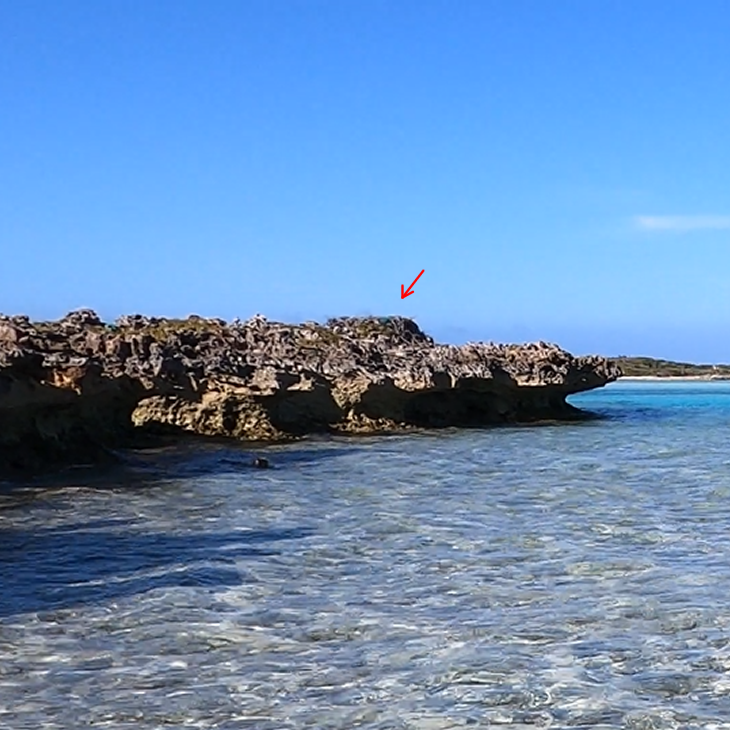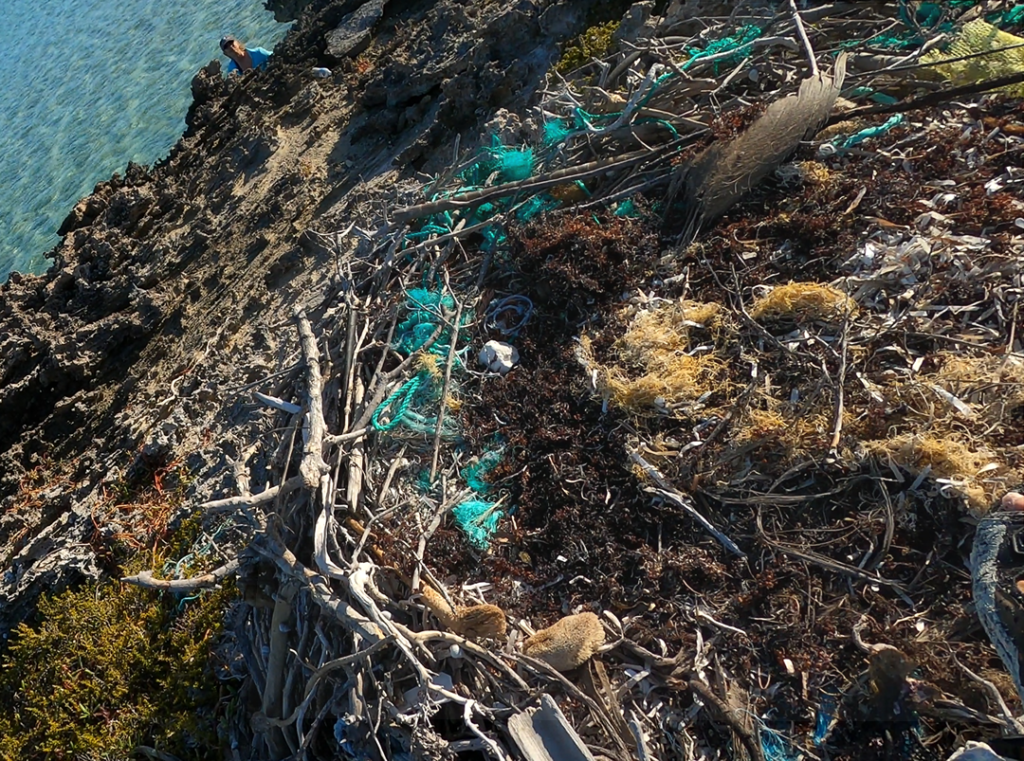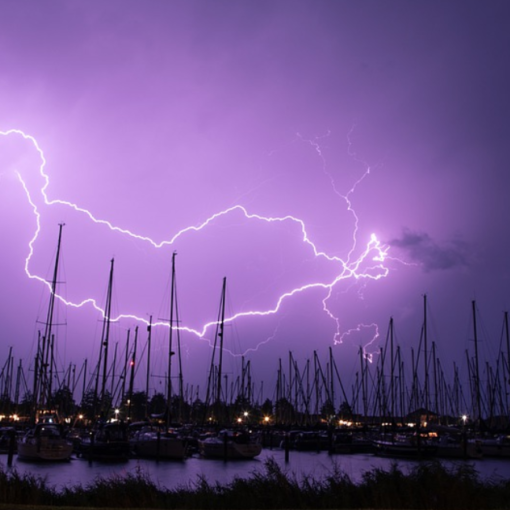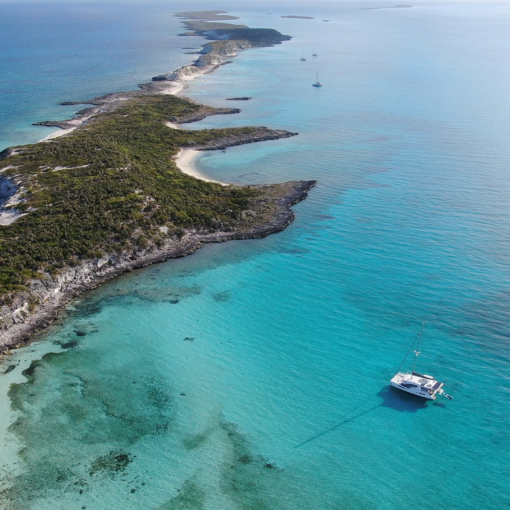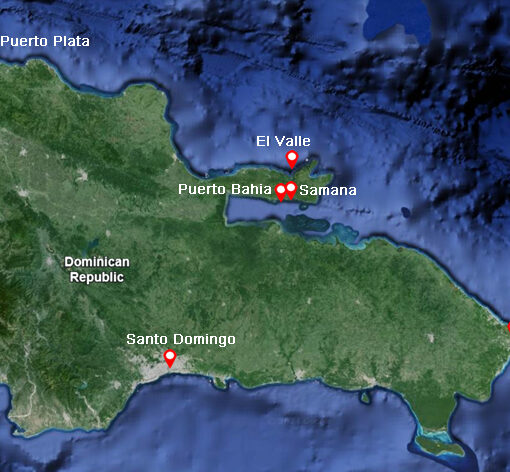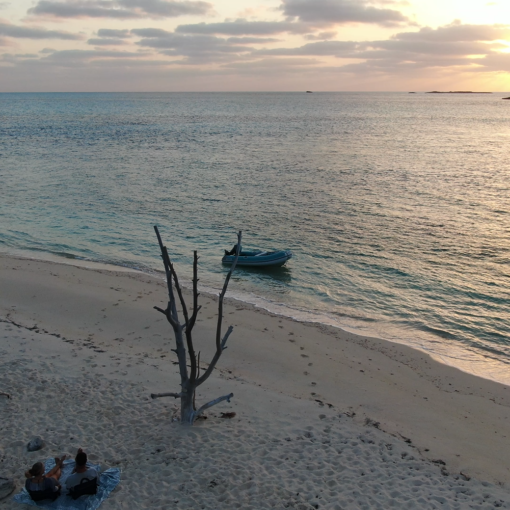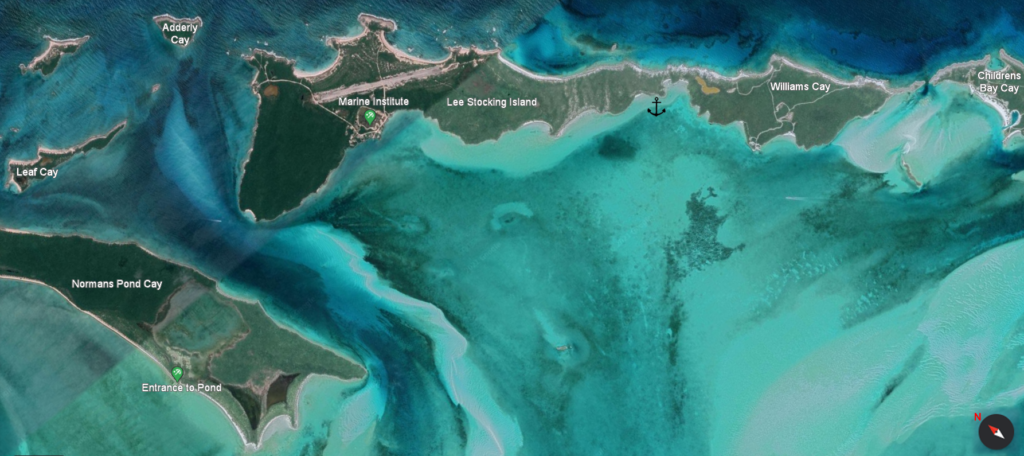
After a week at Rudder Cut Cay, we continued south and headed to Lee Stocking Island. We had been looking forward to Lee Stocking and our anchorage destination, Williams Bay, for weeks. It read beautifully and the real thing didn’t disappoint.
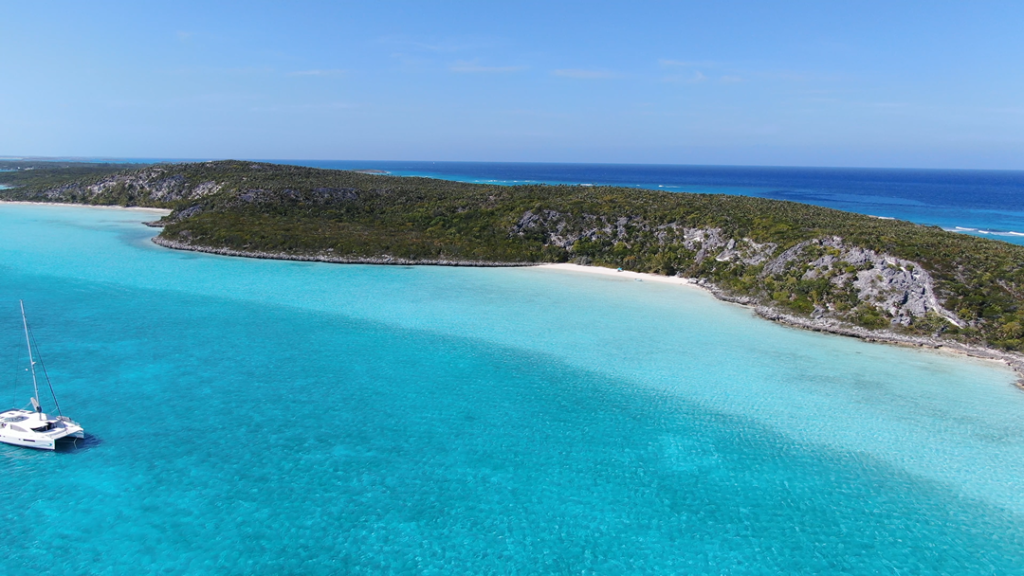
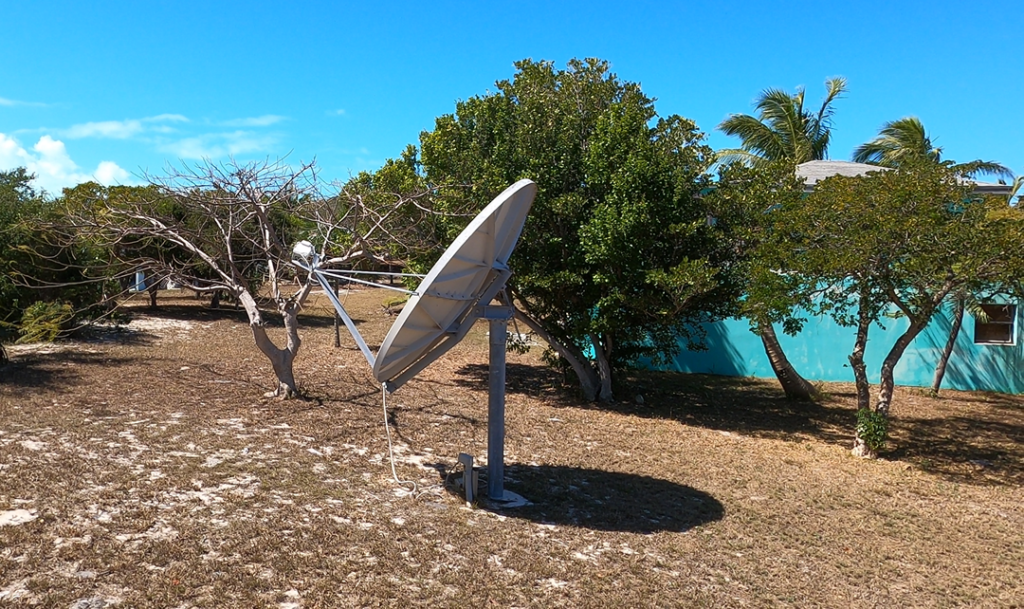
Marine Research Center
The Perry Institute for Marine Science was founded in 1970 by John Perry to study the coral reefs, fisheries, ecosystems and underwater biodiversity of the region. It also developed manned and unmanned submersibles. John Perry had been appointed chair of the new Marine Science Commission by President Johnson in 1968 and he was instrumental in the creation of the National Oceanic and Atmospheric Administration (NOAA).
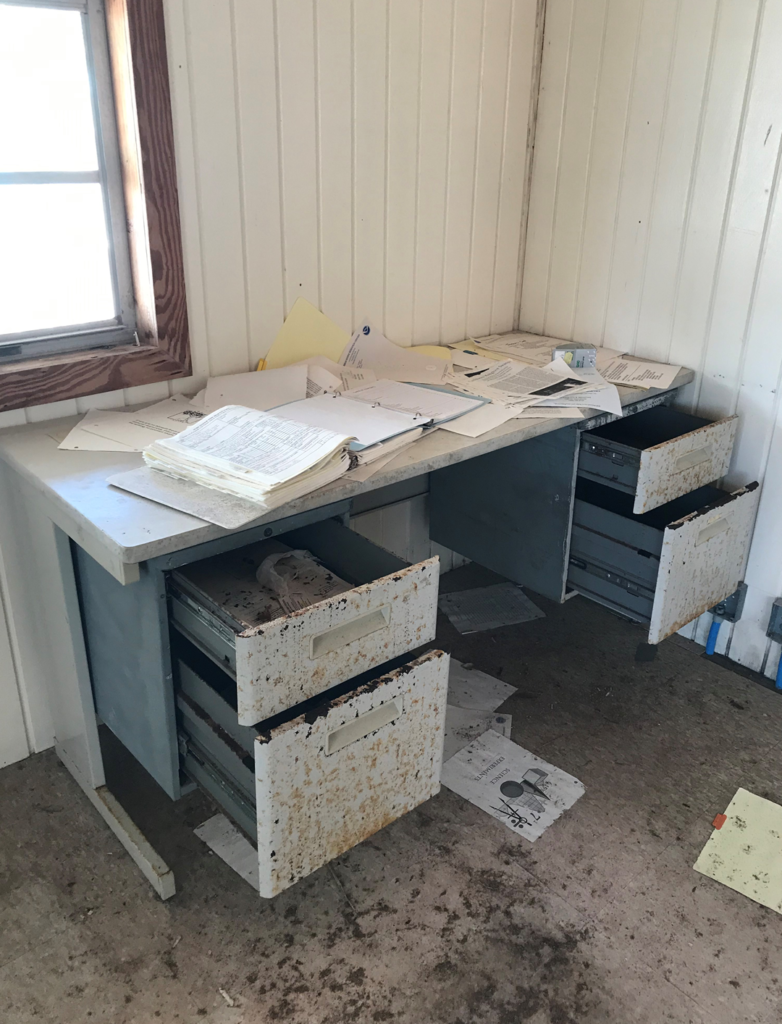
In 1984, the Perry Institute created the Caribbean Marine Research Center on Lee Stocking Island. It closed in 2012, leaving behind a post-apocalyptic scene. All of the buildings are open. Furniture, equipment, research papers and daily assignments on the wall are still there. The people just disappeared.
We roamed the site for quite awhile. It was a bit museum and a bit zombie movie. One room was full of large aquariums like you would see at your local aquarium store. There were large concrete ponds that looked similar to those used for fish farming. There was a large generator and a desalinator for making fresh water from sea water in high volume. The private residences still had some furniture and dishes. It must have been quite a place to work. The dock has perhaps the best view on the island.
Coconuts!
As exciting as the institute itself were the dozens of coconut palms all over the grounds. We had not yet encountered coconuts on our trip. Getting them was a challenge! We found two usable ones on the ground. I tried using them as heavy footballs to dislodge more, but failed. Then I tried hitting them on a shorter tree with a 2×6 piece of wooden decking, but failed. Finally, I found a crude ladder and a long hooked pipe. That did the trick and we got a couple.
When we returned to the boat, we opened a couple. One of the young green ones was full of tasty coconut water.
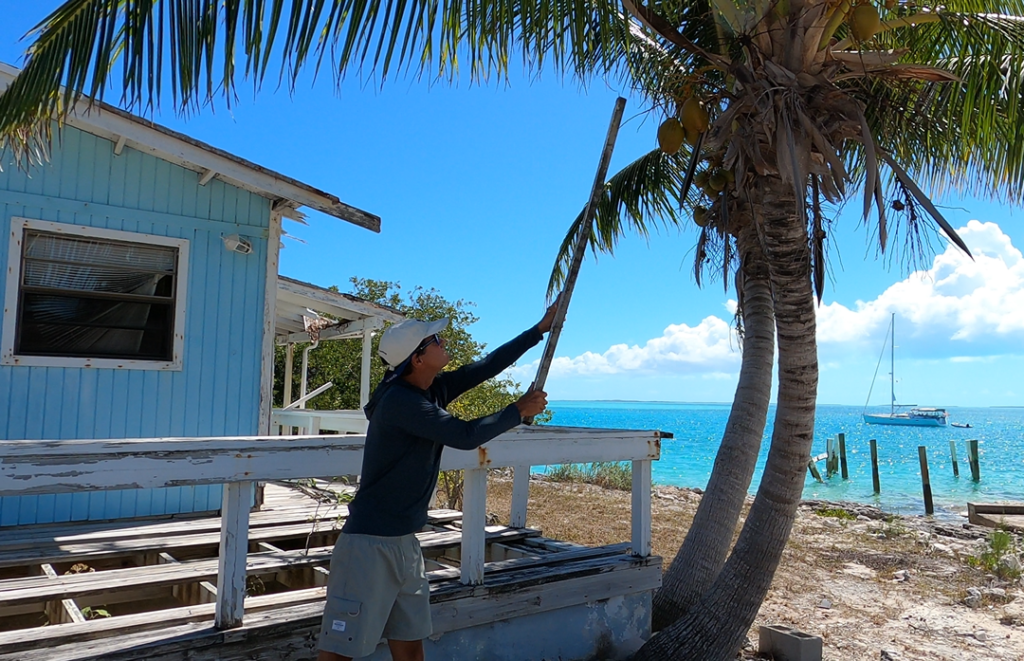
Perry’s Peak
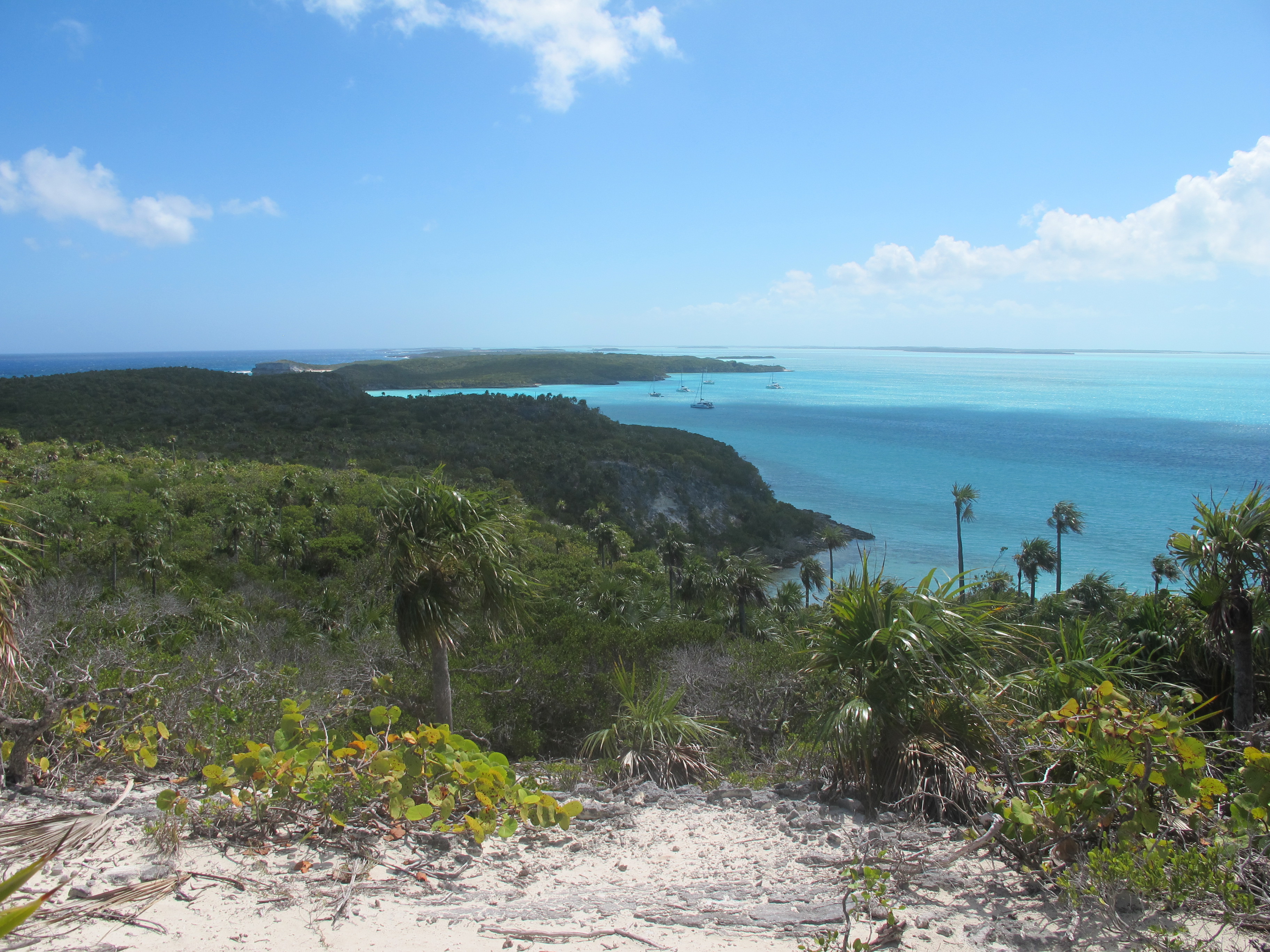
Rising 39 meters above sea level, Perry’s Peak is the highest point in the Exumas. It offers a spectacular view! The trail starts at the southern end of the coconut-palm beach that lies between the Marine Center and Williams Bay. It winds south along the coast and around towards Williams Bay before quickly rising. One of the best hikes in our entire trip.
Normans Pond Cay
Norman’s Pond Cay is a relatively large, uninhabited island lying directly west of Lee Stocking Island. We dinghied over one day to explore its abandoned salt ponds. The entrance is on the southwest side, where a small stream allows tidal flows between the interior ponds and the ocean. We unintentionally timed our arrival on an approaching low tide, which meant we would have to go by foot and leave the dinghy behind.
Walking up the narrow stream through the mangroves was an exercise in “don’t think about it”. A gooey mess of organic matter oozing in your toes if you happened to step in the wrong spot, which we managed to do many times.
Around the bend we reached a mix of land and drying ponds. We didn’t see anything that looked like salt ponds, but it was great to explore nonetheless.
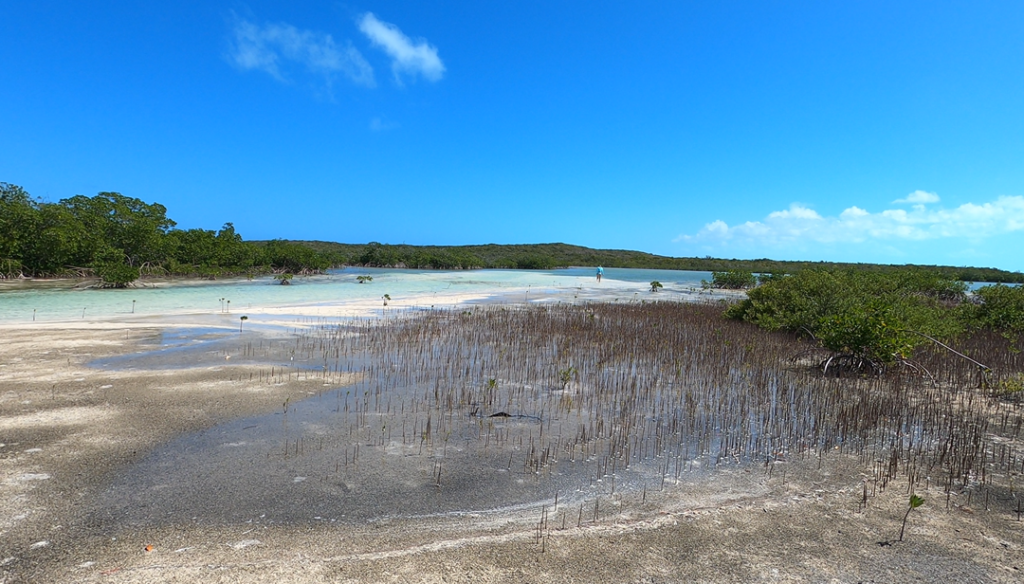
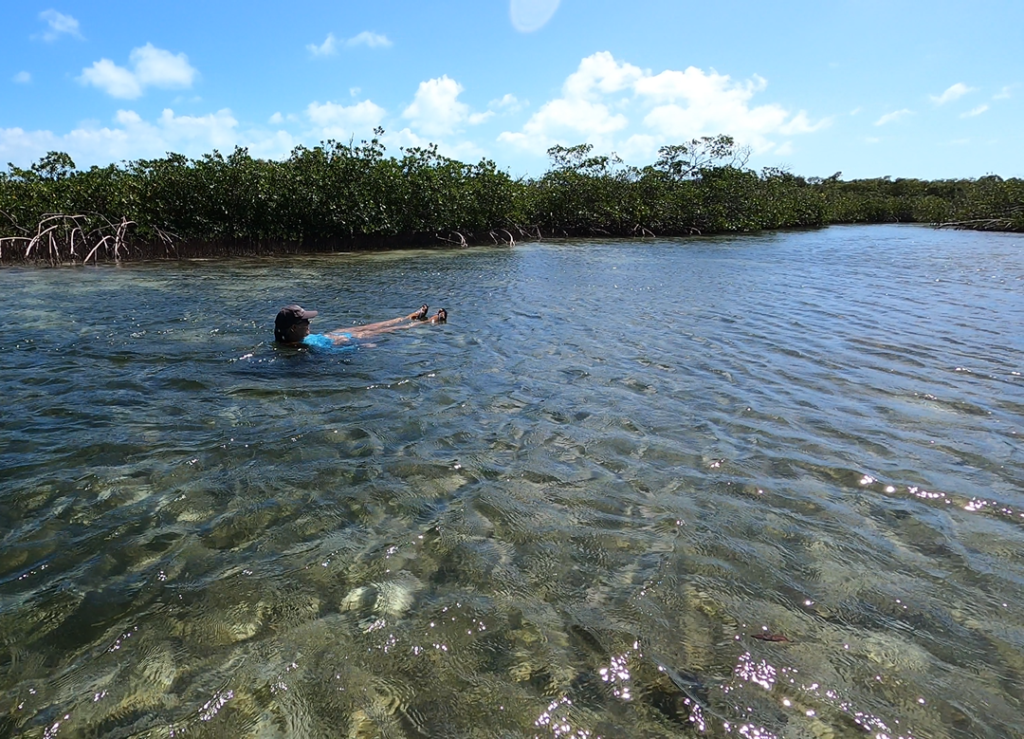
Some people pay good money to float down lazy rivers at water parks. We made our own! We were able to use the ebb current to simply float our way back to the sea. No gooey mess this time!
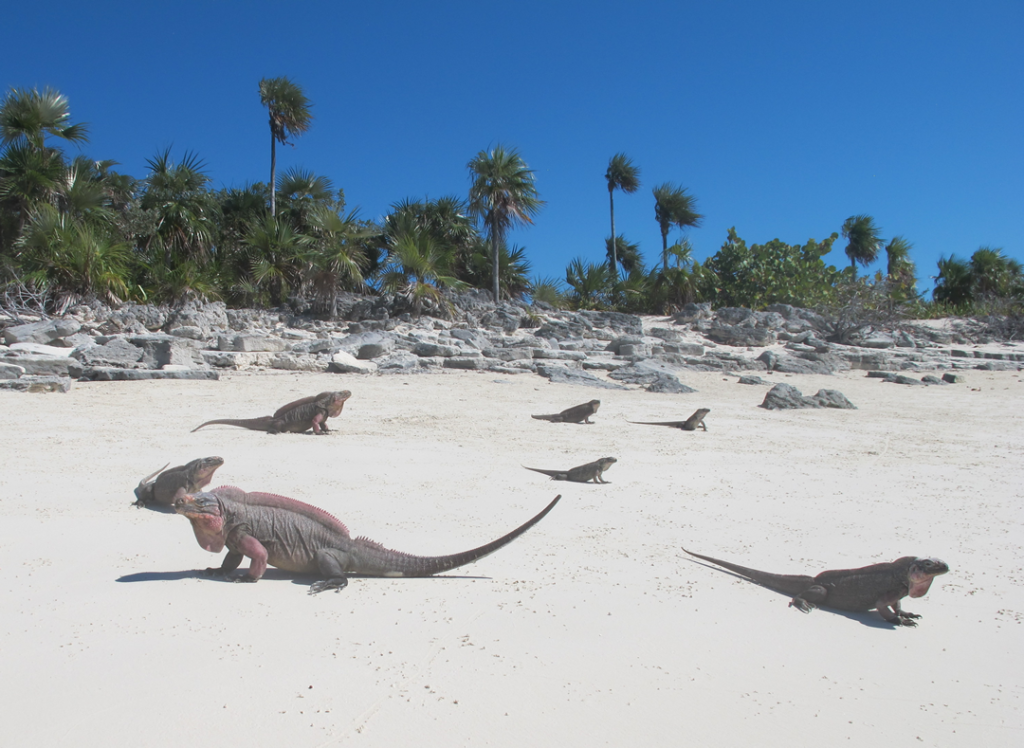
Leaf Cay
After circumnavigating Norman’s Pond, we made a pit stop at neighboring Leaf Cay, a small protected reserve with its own set of iguanas. These iguanas were friendlier than the ones at Allen Cay and seemed darker red.
The small beach had the cleanest white sand and the shallow tide pools were a great place to float in the cooling water!
Children’s Bay Cay
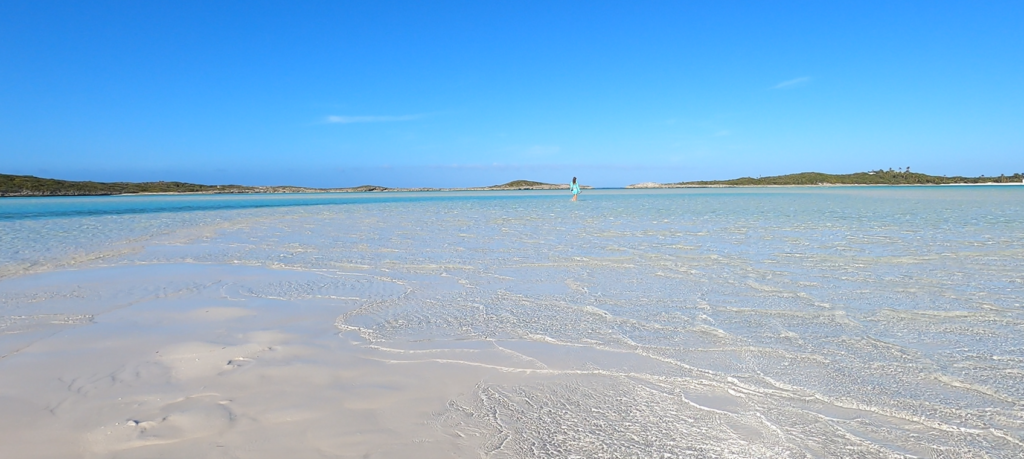
Immediately south of Williams Bay is Children’s Bay Cay, an idyllic shallow anchorage fronted by a pristine white beach. We were originally going to anchor here for a night before continuing on to Georgetown, but opted for a short dinghy ride instead.
The bay is dominated by a shallow sandbar that is partially dry at low tide, which it happened to be at the time! We never seem to get enough of walking around in an inch of water.
Osprey Nest
We found an abandoned Osprey nest! It was built from all kinds of materials and most surprising was that the inside is flat at the height of the nest – not the concave basket we’re used to seeing in nests. We double checked online and apparently this how they are.
